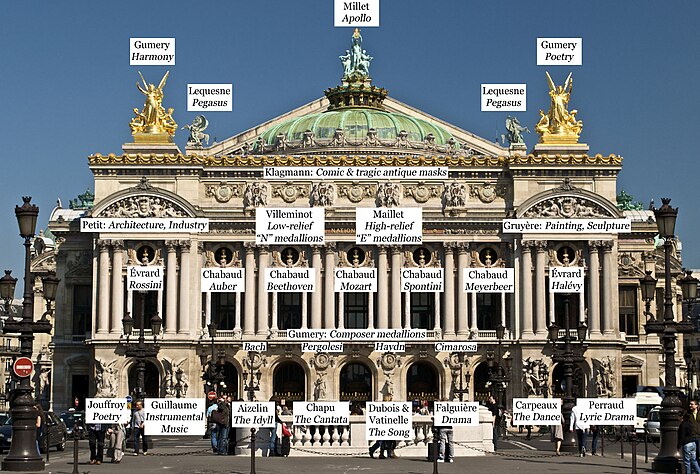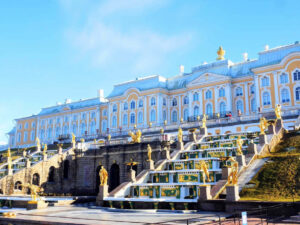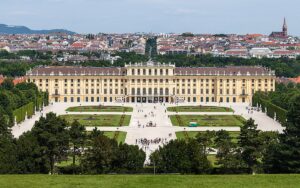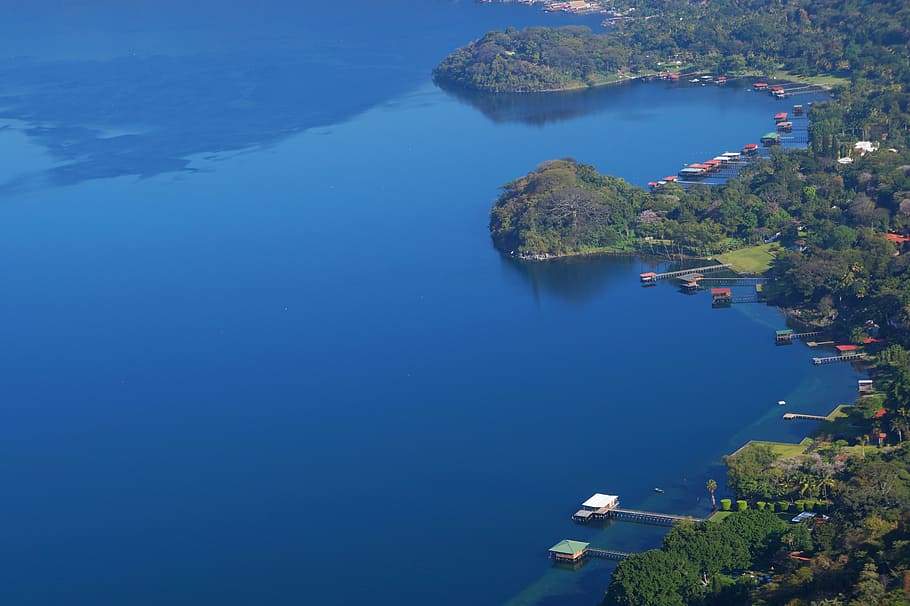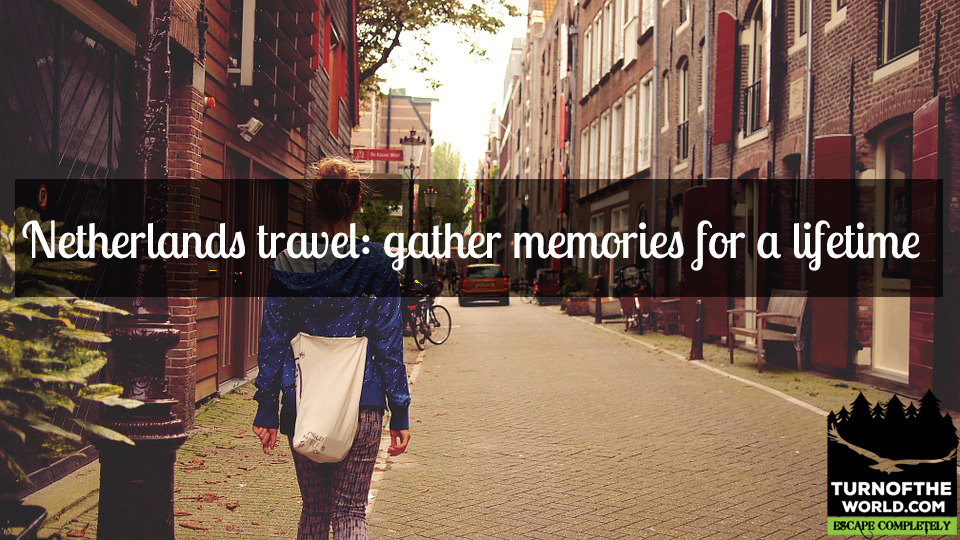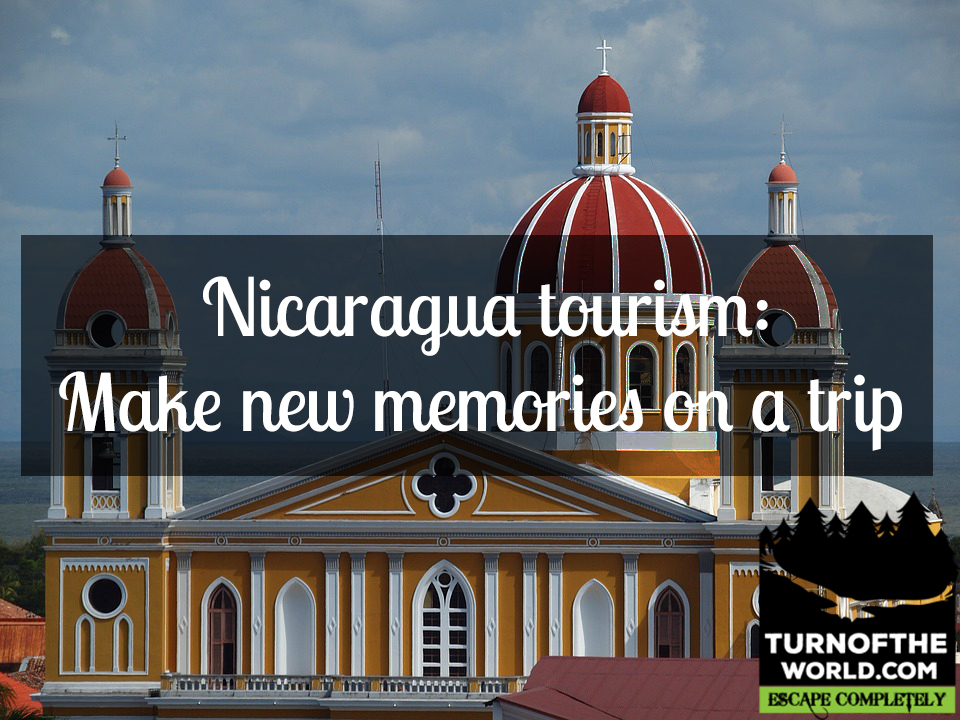Welcome to El Salvador, a hidden gem in Central America that offers a vibrant tapestry of culture and history waiting to be explored. In this section, we will take you on a journey through some of the must-visit tourist places in El Salvador that will allow you to immerse yourself in the rich heritage of this incredible country.
Why Explore the Rich Culture and History of El Salvador?
El Salvador may be small, but it is big on history and culture. By delving into the core of El Salvador’s past, you will gain a deeper understanding of its present and the stories that shaped its identity. From ancient Mayan ruins to colonial towns, each one of these destinations holds a unique tale that deserves to be heard.
Must-Visit Tourist Places in El Salvador
1. Joya de Cerén Archaeological Site
Step back to the Joya de Cerén Archaeological Site, often called the “Pompeii of the Americas.” This UNESCO World Heritage Site showcases the remarkably preserved remains of a pre-Columbian farming village buried under layers of volcanic ash. As you wander through the excavated buildings, you’ll catch a glimpse of daily life from over 1,400 years ago.
2. Suchitoto
Nestled in the heart of El Salvador, Suchitoto is a captivating colonial town that will transport you back to the days of Spanish rule. Stroll through cobblestone streets, admire the well-preserved architecture, and soak up the enchanting atmosphere of this cultural hub. Don’t miss the opportunity to visit the Church of Santa Lucía, a stunning example of Spanish-Baroque architecture.
3. Tazumal Archaeological Site
Travel further back in time with a visit to the Tazumal Archaeological Site. This ancient Mayan site is home to towering pyramids and impressive ruins that offer a glimpse into the rich civilization that once thrived in the region. Marvel at the intricate stone carvings and learn about the fascinating history of the Mayan people.
4. Ruta de las Flores
For a colorful and picturesque experience, explore the Ruta de las Flores (Route of the Flowers). This 36-kilometer stretch of road winds through the lush mountains of western El Salvador and is adorned with vibrant flowers, charming villages, and breathtaking landscapes. Take your time to stop at each town along the way, where you can indulge in local cuisine, browse handicrafts, and engage with friendly locals.
The Mayan History of El Salvador: Exploring Ancient Ruins and Cultural Legacies
The Mayan civilization is a captivating chapter in the history of El Salvador. Let’s dive into the rich heritage and discover the wonders left behind by this ancient civilization.
The Brief History of Mayan Civilization in El Salvador
- The Mayans inhabited the region of present-day El Salvador for thousands of years, with their civilization reaching its peak between 300 and 900 AD.
- They established complex city-states with advanced farming techniques and sophisticated hieroglyphic writing systems.
- The Mayan people were skilled astronomers, mathematicians, and architects, leaving behind monumental structures that astound visitors today.
Popular Mayan Tourist Places in El Salvador
El Salvador is home to remarkable Mayan ruins, providing a glimpse into the grandeur of this ancient civilization.
1. Joya de Cerén
- Often referred to as the “Pompeii of the Americas,” Joya de Cerén is a UNESCO World Heritage Site.
- It was a pre-Columbian farming village buried under volcanic ash, perfectly preserved for over 1,400 years.
- Explore the excavated buildings and witness the everyday life of Mayan villagers from the past.
2. Tazumal
- Tazumal is another significant Mayan archaeological site that showcases the architectural prowess of the Mayans.
- Marvel at the towering pyramids and examine the intricate stone carvings that depict Mayan mythology and history.
- Don’t miss the nearby museum, which provides further insights into the Mayan culture and its significance.
Importance of Preserving and Exploring the Ancient Mayan Ruins
Preserving the ancient Mayan ruins is crucial to understanding and appreciating this remarkable civilisation’s history, culture, and achievements.
- These sites offer valuable insights into the advancements made by the Mayans in various fields, such as agriculture, architecture, and astronomy.
- Exploring the ruins allows us to connect with the past, fostering a sense of appreciation for the rich cultural heritage of El Salvador.
- By preserving these sites, we ensure that future generations can continue to learn from and be inspired by the accomplishments of the Mayan civilization.
The Influence of Mayan Culture in Modern-Day El Salvador
The Mayan culture continues to leave its mark on modern-day El Salvador, evident in various aspects of life.
- Mayan traditions and customs persist in rural communities, showcasing the resilience and enduring spirit of the Mayan people.
- The Mayan influence can be seen in El Salvador’s cuisine, art, and even the local language.
- Traditional ceremonies and celebrations rooted in Mayan culture contribute to the vibrant tapestry of El Salvador’s cultural heritage.
Colonial Architecture in El Salvador: Uncovering the Cultural Soul of the Nation
El Salvador’s colonial architecture is a testament to the country’s history, eventually blending European and indigenous styles to create a distinctive aesthetic. From towering churches to sun-bleached buildings, each one tells a unique story.
Popular Colonial Tourist Places in El Salvador
1. San Salvador Cathedral
The San Salvador Cathedral is a must-visit when exploring the colonial architecture of El Salvador. Its grandeur and scale are awe-inspiring; you’ll find priceless artworks and artifacts inside.
2. Ataco
Ataco is a picturesque colonial town in the heart of El Salvador’s coffee country. Its art galleries, handicraft shops, and bustling marketplaces offer a glimpse into daily life in colonial times.
Importance of Preserving and Exploring the Colonial Architecture
El Salvador’s colonial architecture is a fundamental part of the country’s cultural identity, and its preservation enables us to cherish our past and envision our future.
- It offers insights into the country’s history, including its struggles and triumphs.
- Exploring the colonial buildings allows us to connect with a bygone era and appreciate the craftsmanship and materials used.
- Preserving the architecture is essential to maintaining the vibrancy and character of El Salvador’s cities and towns.
The Representation of El Salvador’s History and Cultural Identity in Colonial Architecture
El Salvador’s colonial architecture is more than just buildings; it represents the nation’s history and cultural identity.
- It reflects the fusion of indigenous and European cultures that have given birth to the uniqueness of El Salvador’s identity.
- The architecture’s symbols, motifs, and details speak of myths, legends, and profound beliefs.
- The color palettes, materials, and shapes used embody the people’s and land’s character and spirit.
El Salvador’s Indigenous Communities: Exploring the Richness of Cultural Heritage
El Salvador is home to indigenous groups, including the Nahua, Pipil, and Lenca. These communities have been an integral part of El Salvador’s history, and their traditions and customs have been passed down from generation to generation.
Popular Indigenous Tourist Places in El Salvador
1. Panchimalco
Panchimalco is a colorful town that has managed to preserve the indigenous heritage of the Pipil people. Strolling through its streets, you’ll find artisans selling their beautiful crafts and traditional music and dance performances.
2. Izalco
Izalco is a charming town known as “the city of the suncatcher.” It is home to the Nahua people, famous for their exquisite pottery and weaving. You can witness traditional pottery-making processes and participate in weaving workshops here.
Importance of Honoring and Learning from El Salvador’s Indigenous Cultures
Honoring and learning from El Salvador’s indigenous cultures is vital to preserving the country’s cultural heritage.
- Indigenous communities offer unique insights into the country’s history, perspectives, and traditions.
- Their customs and traditions possess intrinsic beauty and value that warrant preservation and celebration.
- Understanding and respecting their way of life can lead to greater appreciation and respect for diversity.
How the Indigenous Communities Contribute to El Salvador’s Cultural Diversity
El Salvador’s cultural diversity is due, in part, to its indigenous communities’ contributions to culture, beliefs, and customs.
- Each indigenous community has unique customs and traditions, enriching the country’s cultural identity.
- Indigenous music, dance, and artwork are celebrated national treasures, showcasing the country’s creative heritage.
- Impressively, many indigenous languages and dialects still survive, symbolizing resilience and cultural continuity.
Museums and Art Galleries in El Salvador: Unveiling the Stories Behind the Canvas
El Salvador boasts a rich cultural heritage beautifully showcased in its museums and art galleries. Here, you can immerse yourself in the artistic visions of renowned painters, delve into the depths of historical artifacts, and gain a deeper understanding of the country’s vibrant cultural identity.
Overview of Popular Museums and Art Galleries in El Salvador
Experience the magic of El Salvador’s museums and art galleries by visiting these must-see destinations:
- Museo de Arte de El Salvador: Located in San Salvador, this museum houses an impressive collection of Salvadoran artwork, ranging from colonial masterpieces to contemporary expressions. Let the strokes of color and texture transport you to another world.
- National Museum of Anthropology: Discover the ancient roots of El Salvador at this museum, where archaeological treasures and artifacts bring the country’s indigenous past to life. Unearth the stories of the ancient civilizations that once thrived here.
Importance of Exploring El Salvador’s Art and History through Museums and Galleries
Immersing yourself in El Salvador’s art and history is a gateway to understanding the heart and soul of the country. Here’s why exploring museums and art galleries is an essential part of any journey:
- Gain a deeper appreciation for the country’s diverse cultural heritage and the artistic expressions that have shaped its identity.
- Discover Salvadoran artists’ and historical figures’ untold stories and perspectives, allowing you to see the world from a new lens.
- Engage in a dialogue between the past, present, and future, connecting with the roots while witnessing the evolution of Salvadoran artistry.
How the Museums and Art Galleries Reflect El Salvador’s Cultural Identity
El Salvador’s museums and art galleries serve as mirrors reflecting the nation’s cultural identity:
- The artwork showcases Salvadoran artists’ resilience, creativity, and unique perspectives, encapsulating the spirit of the people and the land.
- Historical artifacts shed light on the diverse cultural influences that have shaped El Salvador over the centuries, telling tales of conquest, survival, and triumph.
- The vibrant exhibitions and curated collections celebrate the country’s artistic traditions while embracing contemporary expressions, balancing tradition with innovation.
So, pack your curiosity and journey through El Salvador’s museums and art galleries. Let the colors, stories, and artistic expressions ignite your imagination and deepen your connection to the rich tapestry of El Salvador’s cultural heritage. Your adventure awaits.
Markets and Food Culture in El Salvador: A Feast for the Senses
From the vibrant colors of fresh produce to the aroma of sizzling street food, El Salvador’s markets are a sensory feast. At these bustling hubs, you’ll find the freshest ingredients and a glimpse into the heart of Salvadoran life and culture.
Overview of Popular Markets and Food Destinations in El Salvador
Don’t miss these must-visit markets and food destinations in El Salvador:
- El Mercado Central: Located in the heart of San Salvador, this bustling market is a treasure trove of sights, sounds, and flavors. Wander through colorful stalls selling everything from tropical fruits to artisan crafts, and be sure to indulge in a hearty plate of pupusas, El Salvador’s beloved stuffed tortillas.
- La Pupusa Loka: For a true taste of the iconic pupusa, head to La Pupusa Loka. This local favorite in Santa Tecla offers an array of mouthwatering pupusa fillings, from classic cheese and loroco to adventurous combinations like shrimp and avocado. Pair it with a refreshing horchata or tamarindo drink for the perfect meal.
Importance of Experiencing El Salvador’s Cuisine and Market Culture
Immersing yourself in El Salvador’s cuisine and market culture is more than a gastronomic experience. Here’s why it’s a must-do:
- Taste the authentic flavors of El Salvador: From the rich, savory notes of pupusas to the refreshing tang of curtido, the traditional Salvadoran coleslaw, each bite tells a story of local ingredients and time-honored recipes passed down through generations.
- Connect with the vibrant community: El Salvador’s markets are not just places to buy ingredients, but meeting points for friends, families, and neighbors. Engage in lively conversations with vendors, sample their recommendations, and feel the warmth of the Salvadoran spirit.
How the Markets and Food Culture Represent El Salvador’s Communal and Vibrant Culture
El Salvador’s markets and food culture are a reflection of the country’s communal and vibrant nature:
- The lively atmosphere of the markets mirrors the lively spirit of the Salvadoran people, who embrace life with joy and enthusiasm.
- Food is a way to share love and create connections. Whether preparing pupusas as a family or sharing a meal with strangers at the market, food brings people together, fostering a sense of unity and celebration.
Beaches and Natural Landscapes of El Salvador: Discovering the Hidden Gems
Are you ready to soak in the sun, feel the sand between your toes, and witness nature’s pristine beauty? This section takes you through El Salvador’s breathtaking beaches and natural landscapes. From the turquoise waters of Punta Roca to the serene vistas of Lake Coatepeque, El Salvador is a paradise waiting to be explored.
Introduction to El Salvador’s Beaches and Natural Landscapes
El Salvador’s natural landscapes are a testament to the country’s beauty and resilience. Amidst the bustling cities and ancient ruins, El Salvador is home to some of the world’s most stunning beaches and breathtaking landscapes that are destinations in themselves.
Overview of Popular Beaches and Natural Tourist Places in El Salvador
Don’t miss these natural wonders that should be on your bucket list:
- Punta Roca: Dubbed one of the best surf spots in the world, Punta Roca in La Libertad is a surfer’s paradise. Its sand bottom and powerful swells attract surfers from around the world.
- Lake Coatepeque: This crater lake in the Ahuachapán department offers stunning vistas straight out of a postcard. Take a dip in the lake’s warm waters, hike to nearby viewpoints for panoramic views, or relax and soak in the natural beauty.
Importance of Preserving and Exploring El Salvador’s Natural Beauty
It’s crucial to care for and preserve El Salvador’s natural beauty for the following reasons:
- Natural landscapes impact the planet’s ecological balance, and by preserving them, we play a part in maintaining the planet’s health.
- Exploring natural landscapes allows us to reconnect with nature and rejuvenates our mind, body, and soul.
How El Salvador’s Natural Landscapes Represent its Diversity and Resilience
El Salvador’s natural landscapes showcase the country’s strength, resilience, and diversity:
- From the sun-kissed beaches of the Pacific Coast to the lush forests of Montecristo National Park, El Salvador’s natural landscapes reflect its varied topography and weather patterns.
- These landscapes represent the country’s resilience, as they have withstood centuries of natural forces such as earthquakes, volcanic eruptions, and hurricanes.
Tourist Places in El Salvador: A Journey to Discover the Rich Culture and History
Welcome to El Salvador, a hidden gem in Central America that offers a vibrant tapestry of culture and history waiting to be explored. In this section, we will take you on a journey through some of the must-visit tourist places in El Salvador that will allow you to immerse yourself in the rich heritage of this incredible country.
Why Explore the Rich Culture and History of El Salvador?
El Salvador may be small, but it is big on history and culture. By delving into the core of El Salvador’s past, you will gain a deeper understanding of its present and the stories that shaped its identity. From ancient Mayan ruins to colonial towns, each one of these destinations holds a unique tale that deserves to be heard.
Must-Visit Tourist Places in El Salvador
1. Joya de Cerén Archaeological Site
Step back to the Joya de Cerén Archaeological Site, often called the “Pompeii of the Americas.” This UNESCO World Heritage Site showcases the remarkably preserved remains of a pre-Columbian farming village buried under layers of volcanic ash. As you wander through the excavated buildings, you’ll catch a glimpse of daily life from over 1,400 years ago.
2. Suchitoto
Nestled in the heart of El Salvador, Suchitoto is a captivating colonial town that will transport you back to the days of Spanish rule. Stroll through cobblestone streets, admire the well-preserved architecture, and soak up the enchanting atmosphere of this cultural hub. Don’t miss the opportunity to visit the Church of Santa Lucía, a stunning example of Spanish-Baroque architecture.
3. Tazumal Archaeological Site
Travel further back in time with a visit to the Tazumal Archaeological Site. This ancient Mayan site is home to towering pyramids and impressive ruins that offer a glimpse into the rich civilization that once thrived in the region. Marvel at the intricate stone carvings and learn about the fascinating history of the Mayan people.
4. Ruta de las Flores
For a colorful and picturesque experience, explore the Ruta de las Flores (Route of the Flowers). This 36-kilometer stretch of road winds through the lush mountains of western El Salvador and is adorned with vibrant flowers, charming villages, and breathtaking landscapes. Take your time to stop at each town along the way, where you can indulge in local cuisine, browse handicrafts, and engage with friendly locals.
The Mayan History of El Salvador: Exploring Ancient Ruins and Cultural Legacies
The Mayan civilization is a captivating chapter in the history of El Salvador. Let’s dive into the rich heritage and discover the wonders left behind by this ancient civilization.
The Brief History of Mayan Civilization in El Salvador
- The Mayans inhabited the region of present-day El Salvador for thousands of years, with their civilization reaching its peak between 300 and 900 AD.
- They established complex city-states with advanced farming techniques and sophisticated hieroglyphic writing systems.
- The Mayan people were skilled astronomers, mathematicians, and architects, leaving behind monumental structures that astound visitors today.
Popular Mayan Tourist Places in El Salvador
El Salvador is home to remarkable Mayan ruins, providing a glimpse into the grandeur of this ancient civilization.
1. Joya de Cerén
- Often referred to as the “Pompeii of the Americas,” Joya de Cerén is a UNESCO World Heritage Site.
- It was a pre-Columbian farming village buried under volcanic ash, perfectly preserved for over 1,400 years.
- Explore the excavated buildings and witness the everyday life of Mayan villagers from the past.
2. Tazumal
- Tazumal is another significant Mayan archaeological site that showcases the architectural prowess of the Mayans.
- Marvel at the towering pyramids and examine the intricate stone carvings that depict Mayan mythology and history.
- Don’t miss the nearby museum, which provides further insights into the Mayan culture and its significance.
Importance of Preserving and Exploring the Ancient Mayan Ruins
Preserving the ancient Mayan ruins is crucial to understanding and appreciating this remarkable civilization’s history, culture, and achievements.
- These sites offer valuable insights into the advancements made by the Mayans in various fields, such as agriculture, architecture, and astronomy.
- Exploring the ruins allows us to connect with the past, fostering a sense of appreciation for the rich cultural heritage of El Salvador.
- By preserving these sites, we ensure that future generations can continue to learn from and be inspired by the accomplishments of the Mayan civilization.
The Influence of Mayan Culture in Modern-Day El Salvador
The Mayan culture continues to leave its mark on modern-day El Salvador, evident in various aspects of life.
- Mayan traditions and customs persist in rural communities, showcasing the resilience and enduring spirit of the Mayan people.
- The Mayan influence can be seen in El Salvador’s cuisine, art, and even the local language.
- Traditional ceremonies and celebrations rooted in Mayan culture contribute to the vibrant tapestry of El Salvador’s cultural heritage.
Colonial Architecture in El Salvador: Uncovering the Cultural Soul of the Nation
El Salvador’s colonial architecture is a testament to the country’s history, eventually blending European and indigenous styles to create a distinctive aesthetic. From towering churches to sun-bleached buildings, each one tells a unique story.
Popular Colonial Tourist Places in El Salvador
1. San Salvador Cathedral
The San Salvador Cathedral is a must-visit when exploring the colonial architecture of El Salvador. Its grandeur and scale are awe-inspiring; you’ll find priceless artworks and artifacts inside.
2. Ataco
Ataco is a picturesque colonial town in the heart of El Salvador’s coffee country. Its art galleries, handicraft shops, and bustling marketplaces offer a glimpse into daily life in colonial times.
Importance of Preserving and Exploring the Colonial Architecture
El Salvador’s colonial architecture is a fundamental part of the country’s cultural identity, and its preservation enables us to cherish our past and envision our future.
- It offers insights into the country’s history, including its struggles and triumphs.
- Exploring the colonial buildings allows us to connect with a bygone era and appreciate the craftsmanship and materials used.
- Preserving the architecture is essential to maintaining the vibrancy and character of El Salvador’s cities and towns.
The Representation of El Salvador’s History and Cultural Identity in Colonial Architecture
El Salvador’s colonial architecture is more than just buildings; it represents the nation’s history and cultural identity.
- It reflects the fusion of indigenous and European cultures that have given birth to the uniqueness of El Salvador’s identity.
- The architecture’s symbols, motifs, and details speak of myths, legends, and profound beliefs.
- The color palettes, materials, and shapes used embody the people’s and land’s character and spirit.
El Salvador’s Indigenous Communities: Exploring the Richness of Cultural Heritage
El Salvador is home to indigenous groups, including the Nahua, Pipil, and Lenca. These communities have been an integral part of El Salvador’s history, and their traditions and customs have been passed down from generation to generation.
Popular Indigenous Tourist Places in El Salvador
1. Panchimalco
Panchimalco is a colorful town that has managed to preserve the indigenous heritage of the Pipil people. Strolling through its streets, you’ll find artisans selling their beautiful crafts and traditional music and dance performances.
2. Izalco
Izalco is a charming town known as “the city of the suncatcher.” It is home to the Nahua people, famous for their exquisite pottery and weaving. You can witness traditional pottery-making processes and participate in weaving workshops here.
Importance of Honoring and Learning from El Salvador’s Indigenous Cultures
Honoring and learning from El Salvador’s indigenous cultures is vital to preserving the country’s cultural heritage.
- Indigenous communities offer unique insights into the country’s history, perspectives, and traditions.
- Their customs and traditions possess intrinsic beauty and value that warrant preservation and celebration.
- Understanding and respecting their way of life can lead to greater appreciation and respect for diversity.
How the Indigenous Communities Contribute to El Salvador’s Cultural Diversity
El Salvador’s cultural diversity is due, in part, to its indigenous communities’ contributions to culture, beliefs, and customs.
- Each indigenous community has unique customs and traditions, enriching the country’s cultural identity.
- Indigenous music, dance, and artwork are celebrated national treasures, showcasing the country’s creative heritage.
- Impressively, many indigenous languages and dialects still survive, symbolizing resilience and cultural continuity.
Museums and Art Galleries in El Salvador: Unveiling the Stories Behind the Canvas
El Salvador boasts a rich cultural heritage beautifully showcased in its museums and art galleries. Here, you can immerse yourself in the artistic visions of renowned painters, delve into the depths of historical artifacts, and gain a deeper understanding of the country’s vibrant cultural identity.
Overview of Popular Museums and Art Galleries in El Salvador
Experience the magic of El Salvador’s museums and art galleries by visiting these must-see destinations:
- Museo de Arte de El Salvador: Located in San Salvador, this museum houses an impressive collection of Salvadoran artwork, ranging from colonial masterpieces to contemporary expressions. Let the strokes of color and texture transport you to another world.
- National Museum of Anthropology: Discover the ancient roots of El Salvador at this museum, where archaeological treasures and artifacts bring the country’s indigenous past to life. Unearth the stories of the ancient civilizations that once thrived here.
Importance of Exploring El Salvador’s Art and History through Museums and Galleries
Immersing yourself in El Salvador’s art and history is a gateway to understanding the heart and soul of the country. Here’s why exploring museums and art galleries is an essential part of any journey:
- Gain a deeper appreciation for the country’s diverse cultural heritage and the artistic expressions that have shaped its identity.
- Discover Salvadoran artists’ and historical figures’ untold stories and perspectives, allowing you to see the world from a new lens.
- Engage in a dialogue between the past, present, and future, connecting with the roots while witnessing the evolution of Salvadoran artistry.
How the Museums and Art Galleries Reflect El Salvador’s Cultural Identity
El Salvador’s museums and art galleries serve as mirrors reflecting the nation’s cultural identity:
- The artwork showcases Salvadoran artists’ resilience, creativity, and unique perspectives, encapsulating the spirit of the people and the land.
- Historical artifacts shed light on the diverse cultural influences that have shaped El Salvador over the centuries, telling tales of conquest, survival, and triumph.
- The vibrant exhibitions and curated collections celebrate the country’s artistic traditions while embracing contemporary expressions, balancing tradition with innovation.
Markets and Food Culture in El Salvador: A Feast for the Senses
From the vibrant colors of fresh produce to the aroma of sizzling street food, El Salvador’s markets are a sensory feast. At these bustling hubs, you’ll find the freshest ingredients and a glimpse into the heart of Salvadoran life and culture.
Overview of Popular Markets and Food Destinations in El Salvador
Don’t miss these must-visit markets and food destinations in El Salvador:
- El Mercado Central: Located in the heart of San Salvador, this bustling market is a treasure trove of sights, sounds, and flavors. Wander through colorful stalls selling everything from tropical fruits to artisan crafts, and be sure to indulge in a hearty plate of pupusas, El Salvador’s beloved stuffed tortillas.
- La Pupusa Loka: For a true taste of the iconic pupusa, head to La Pupusa Loka. This local favorite in Santa Tecla offers an array of mouthwatering pupusa fillings, from classic cheese and loroco to adventurous combinations like shrimp and avocado. Pair it with a refreshing horchata or tamarindo drink for the perfect meal.
Importance of Experiencing El Salvador’s Cuisine and Market Culture
Immersing yourself in El Salvador’s cuisine and market culture is more than a gastronomic experience. Here’s why it’s a must-do:
- Taste the authentic flavors of El Salvador: From the rich, savory notes of pupusas to the refreshing tang of curtido, the traditional Salvadoran coleslaw, each bite tells a story of local ingredients and time-honored recipes passed down through generations.
- Connect with the vibrant community: El Salvador’s markets are not just places to buy ingredients, but meeting points for friends, families, and neighbors. Engage in lively conversations with vendors, sample their recommendations, and feel the warmth of the Salvadoran spirit.
How the Markets and Food Culture Represent El Salvador’s Communal and Vibrant Culture
El Salvador’s markets and food culture are a reflection of the country’s communal and vibrant nature:
- The lively atmosphere of the markets mirrors the lively spirit of the Salvadoran people, who embrace life with joy and enthusiasm.
- Food is a way to share love and create connections. Whether preparing pupusas as a family or sharing a meal with strangers at the market, food brings people together, fostering a sense of unity and celebration.
Beaches and Natural Landscapes of El Salvador: Discovering the Hidden Gems
El Salvador’s natural landscapes are a testament to the country’s beauty and resilience. Amidst the bustling cities and ancient ruins, El Salvador is home to some of the world’s most stunning beaches and breathtaking landscapes that are destinations in themselves.
Overview of Popular Beaches and Natural Tourist Places in El Salvador
Don’t miss these natural wonders that should be on your bucket list:
- Punta Roca: Dubbed one of the best surf spots in the world, Punta Roca in La Libertad is a surfer’s paradise. Its sand bottom and powerful swells attract surfers from around the world.
- Lake Coatepeque: This crater lake in the Ahuachapán department offers stunning vistas straight out of a postcard. Take a dip in the lake’s warm waters, hike to nearby viewpoints for panoramic views, or simply relax and soak in the natural beauty.
Importance of Preserving and Exploring El Salvador’s Natural Beauty
It’s crucial to care for and preserve El Salvador’s natural beauty for the following reasons:
- Natural landscapes impact the planet’s ecological balance, and by preserving them, we play a part in maintaining the planet’s health.
- Exploring natural landscapes allows us to reconnect with nature and rejuvenates our mind, body, and soul.
How El Salvador’s Natural Landscapes Represent its Diversity and Resilience
El Salvador’s natural landscapes showcase the country’s strength, resilience, and diversity:
- From the sun-kissed beaches of the Pacific Coast to the lush forests of Montecristo National Park, El Salvador’s natural landscapes reflect its varied topography and weather patterns.
- These landscapes represent the country’s resilience, as they have withstood centuries of natural forces such as earthquakes, volcanic eruptions, and hurricanes.
Conclusion: Embrace the Magic of El Salvador
As we end our journey through El Salvador, it’s time to reflect on the incredible experiences and discoveries we’ve shared. In this final section, let’s recap the main points covered, reinforce the importance of immersing ourselves in El Salvador’s rich culture and history, and issue a heartfelt call to action, inviting you to embark on your adventure to this enchanting country.
Summarizing the Richness of El Salvador
El Salvador has captivated us with its diverse landscapes, vibrant markets, mouthwatering cuisine, and warm-hearted people. We’ve explored ancient Mayan ruins, wandered through bustling cities, and soaked in the natural beauty of its beaches and landscapes. Along the way, we’ve discovered the strong bond between El Salvador’s culture and its people.
Embracing the Importance of Cultural Exploration
El Salvador’s culture and history are not just something to be observed from a distance. They invite us to immerse ourselves, engage with the locals, and truly understand the country’s soul. By delving into El Salvador’s vibrant traditions, stories, and customs, we gain a deeper appreciation for its people and rich heritage.
A Call to Action: Visit El Salvador and Create Your Own Story
Now, it’s time for you to experience the magic of El Salvador firsthand. Whether you’re drawn to the ancient ruins, the flavors of Salvadoran cuisine, or the warmth of its people, something is waiting for you in this hidden gem of Central America. So, pack your bags, embrace the unknown, and let El Salvador weave its charm around you.
Final Thoughts: Unlock the Door to New Adventures
As I conclude this journey with you, I encourage you to keep exploring, seeking out new experiences, and embracing the world’s diverse cultures. El Salvador is just the beginning. Countless destinations are waiting to be discovered, each with its unique story to tell. So, get out there, my friend, and unlock the door to new adventures.
Remember, traveling is not just about the destination; it’s about the people we meet, the stories we share, and the memories we create. So, go forth with an open heart and a sense of curiosity, and let the world surprise and amaze you.
Bon voyage, and may your future travels be filled with joy, wonder, and unforgettable moments. Until we meet again on the road, happy exploring!

